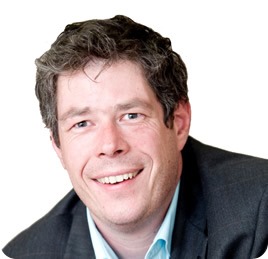
What is retinitis pigmentosa (RP) and how does it lead to blindness?
Retinitis pigmentosa (RP) is a progressive eye disease that leads to untreatable blindness. The name of the disease derives from the fact that one of the areas affected by the disease is the retinal pigment epithelium (RPE) in the back of the eye.
It is an emotionally devastating disease as usually people get diagnosed at a young age, and lose their vision gradually, over time.
Physiologically, retinitis pigmentosa is a group of hereditary conditions affecting the RPE or the rods and cones, the photoreceptors inside the retina at the back of the eye. As RP develops, the photoreceptors cease to work and slowly lead to blindness.
Most people suffering from this disease develop night blindness at approximately 20 years of age, lose peripheral vision, and get "tunnel vision" at around 30 and become completely blind by 40.
Some forms of the disease affect children very early on, while some other forms maintain significant vision until late stages of life. Also some other eye conditions have a similar pattern of degeneration, yet do not cause such profound visual handicap.
Until now, there was no treatment for RP. But fortunately, the rest of the eye structure is well preserved with this disease. For most patients suffering from RP there is the possibility that the neurons in the retina could be activated directly to restore some vision.
How many people are affected by RP?
It’s widely accepted that the prevalence of retinitis pigmentosa is 1:4000 of the population. It is therefore estimated that the population affected by RP in Europe is 200,000 people
Could you please explain how Second Sight developed a “bionic eye” treatment for RP?
The idea behind the bionic eye started with cochlear implants for patients with hearing loss. In cochlear implants, the auditory nerve is stimulated by electrical currents to restore hearing to the deaf. The first experiments took place in 1991 on a small group of 20 blind volunteers to demonstrate the feasibility of creating spots of vision.
In 1998 Second Sight was created by Alfred Mann, the American entrepreneur and philanthropist. In 2002 we started the first human proof of concept with Argus I.
How does the Argus II System restore vision?
The Argus II Retinal Prosthesis System ("Argus II") bypasses the damaged photoreceptors altogether. A miniature video camera housed in the patient’s glasses captures a scene.
The video is sent to a small patient-worn computer (i.e., the video processing unit – VPU) where it is processed and transformed into instructions that are sent back to the glasses via a cable. These instructions are transmitted wirelessly to an antenna in the implant.
The signals are then sent to the electrode array, which emits small pulses of electricity. These pulses bypass the damaged photoreceptors and stimulate the retina’s remaining cells, which transmit the visual information along the optic nerve to the brain, creating the perception of patterns of light. Patients learn to interpret these visual patterns.
Does the device work for all people suffering from blindness due to RP?
The device is intended for people suffering from an advanced form of the disease.
Is the device FDA approved?
The device is FDA approved for use in adults over 25 years old.
How many RP patients have had the system implanted?
To date 86 people have received an Argus II and 3 had their device removed after several years due to surgical complications. The longest time someone used an Argus II is 7 years to date.
The Argus II was recently selected by the French Government to receive ‘Forfait Innovation’ reimbursement. What impact has this had?
The most important thing that will follow from this decision is that 30 blind patients in France every year will be able to benefit from the Argus II technology. Also significant is that we will collect additional quality of life data to further demonstrate the benefit of Argus II.
It’s also significant internationally that a thorough health technology assessment was conducted by the team at the Haute Autorité de Santé who determined that this innovative solution for restoring vision was worthy of reimbursement in France.
Is the National Health Service in the UK considering reimbursing the device?
Yes. A joint application for reimbursement was submitted by Moorfields Eye Hospital and Manchester Royal Eye Hospital in 2011. The National Health Service is currently considering reimbursement for the device.
What are Second Sight’s plans for the future?
We are developing 3 new versions of future "bionic eyes", first improving processing and activation, which will allow all patients to benefit from an "upgrade".
The second is a higher density array to allow to treat other conditions.
Thirdly we are working on stimulating the brain instead of the retina, which will allow us to help patients suffering from other blindness-causing conditions.
Where can readers find more information?
Please see our website: 2-sight.eu
About Dr. Gregoire Cosendai
 Dr Cosendai , Vice President of Second Sight Medical Products, has dedicated his entire career to the emerging field of electrical stimulation to treat patients with sensory loss.
Dr Cosendai , Vice President of Second Sight Medical Products, has dedicated his entire career to the emerging field of electrical stimulation to treat patients with sensory loss.
He is a Master of Electrical Engineering who worked as a PhD student for the Cochlear Implant Research Laboratory at the County Hospital in Geneva, Switzerland where he conducted research studies on human subjects and wrote his dissertation on: "Developing and evaluating new coding strategies for electrical stimulation of the auditory nerve."
Dr Cosendai went on to work for the Alfred Mann Foundation for scientific and medical research in the US from 2001 to 2008 and then returned to Switzerland to be based at Second Sight’s European headquarters in Lausanne, holding the posts of Senior Director, Europe and then Vice President, Europe.